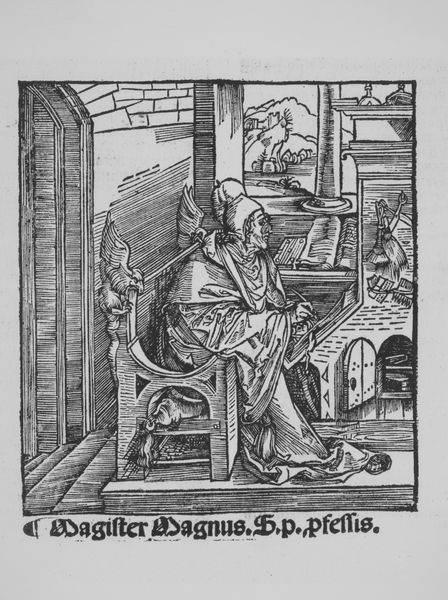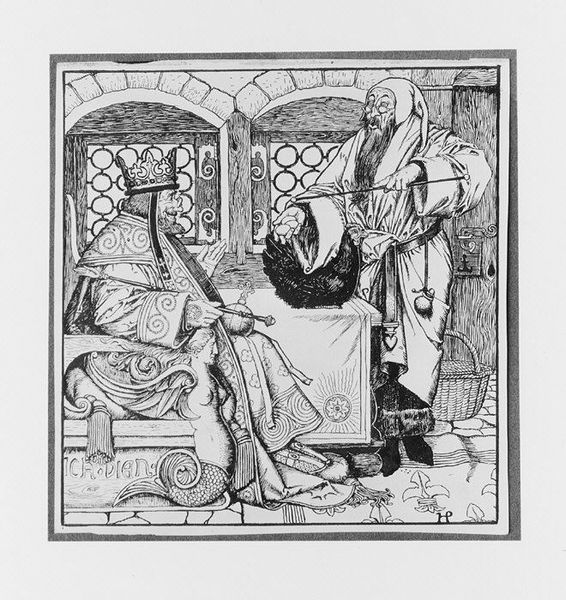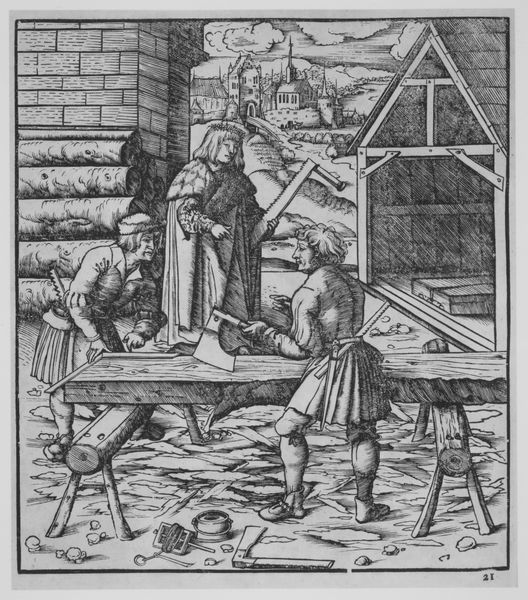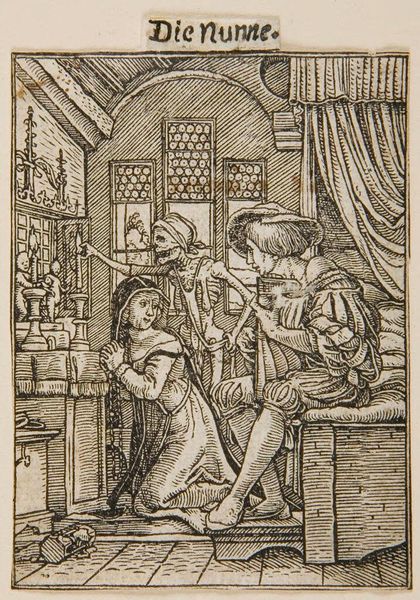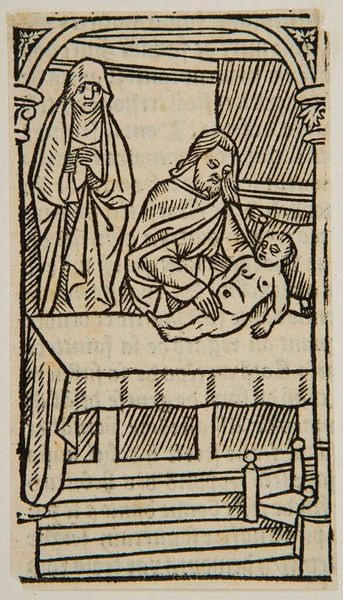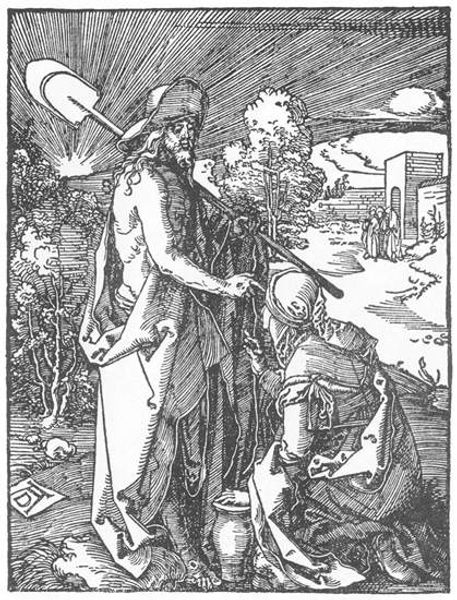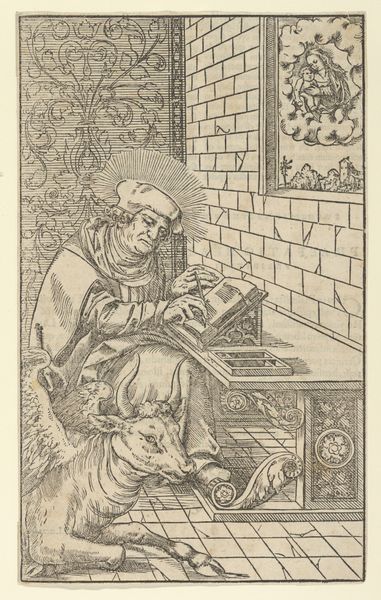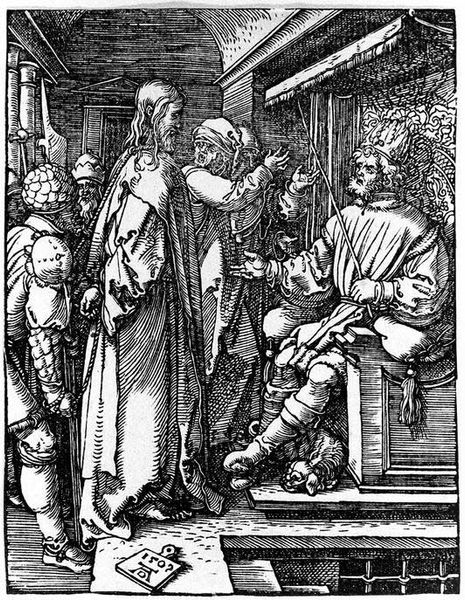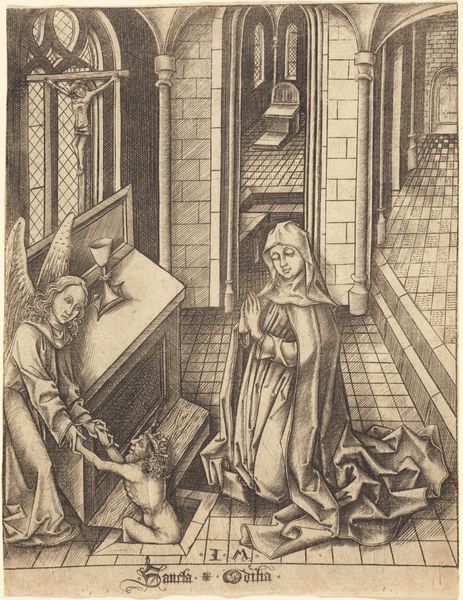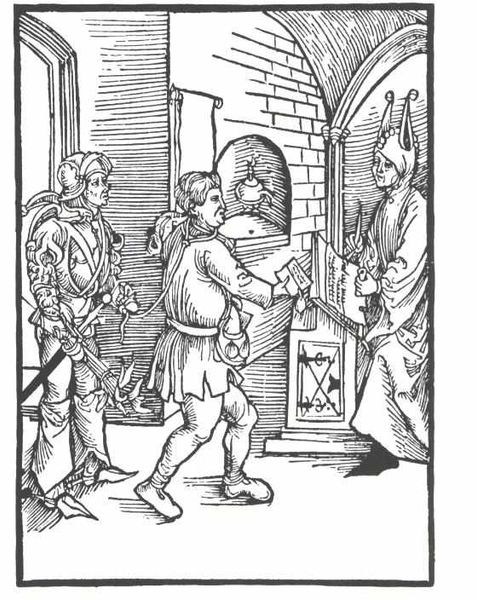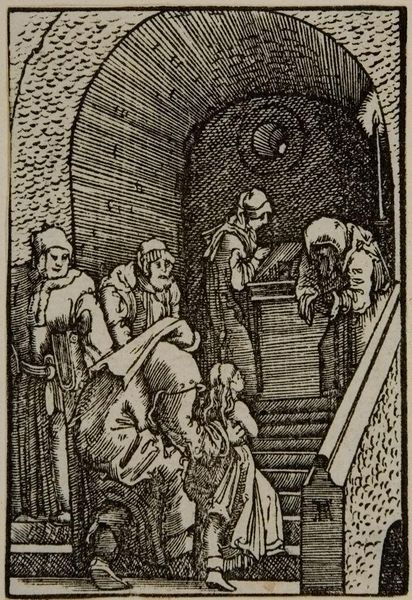
#
comic strip sketch
#
webcomic
#
comic strip
#
pen illustration
#
junji ito style
#
ink line art
#
linework heavy
#
christianity
#
storyboard and sketchbook work
#
organism
#
graphic novel art
#
story boarding
#
christ
Copyright: Public domain
Curator: This is Albrecht Durer's "St. Jerome," created around 1492. It is a striking print. Editor: My first impression is the incredible detail. The textures are almost palpable, especially the rendering of the lion’s fur and Jerome’s garments. The whole scene feels very intimate and concentrated. Curator: Durer's skill with the burin is definitely on display. We see it here in the density of lines, creating such varied tones. The materials available to artists like Durer – the quality of the paper, the sharpness of the burin, even the available light in the workshop - profoundly shaped these works. The ability to create and distribute printed images democratized artmaking in a way that hadn’t been possible before. Editor: Absolutely, the print medium itself carries its own historical weight. Think about the socio-political context. The late 15th century was a time of immense religious and intellectual upheaval, the dawn of the printing press. Images like this, distributed widely, helped to shape the visual culture and devotional practices of the period. Look at the arrangement of the study, the symbols and layout carry the historical weight of Jerome as translator. Curator: Notice also how he uses the space. The careful placement of tools, books, and objects really highlight St. Jerome's profession and working conditions. Even something as seemingly simple as the type of paper would have impacted the final result. Access to certain pigments would also play a major part of artistic consideration. The print medium and the means to generate printed information held social influence during the period, for the people in power who wished to promote propaganda. Editor: Yes, the symbolism is rich, reinforcing his role and message! The inclusion of the lion, of course, speaks to the story of Jerome removing a thorn from the lion's paw, cementing the idea of wisdom, compassion, and control over the animal, symbolizing base human instinct. It suggests how religious icons were used, what sort of political imagery became normalized during this historical period. Curator: Considering that it's printed, we might also want to think about who was consuming these images and under what conditions. How were they sold and circulated, how were they displayed in homes? These processes of consumption ultimately give new layers to meaning-making in addition to original religious intent of this imagery. Editor: This is fascinating work from Durer; thinking through its artistic labor as a symbol, its use and historical symbolism of the period helps us consider artistic merit through a wider cultural and social lens. Curator: Exactly, by investigating both the artistic hand and materials and the wider social influence, we develop a nuanced interpretation that honors Durer's place in art history.
Comments
No comments
Be the first to comment and join the conversation on the ultimate creative platform.
